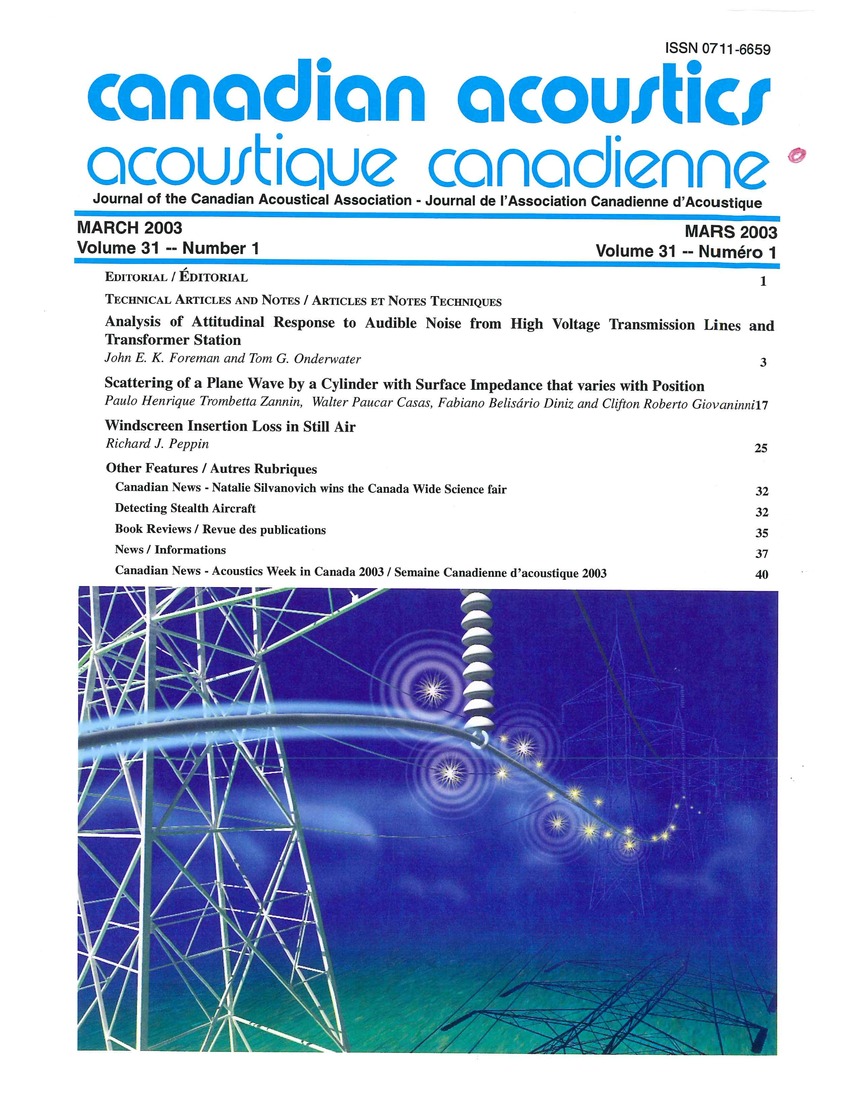Windscreen insertion loss in still air
Keywords:
Acoustic impedance, Attenuation, Audio acoustics, Insertion losses, Microphones, Windshields, Microphone windscreensAbstract
Microphone windscreens are used to attenuate wind noise. However, even in still air, windscreens have an impact due to the added impedance between the source and microphone. This impedance is not accounted for when the system is checked by the use of an acoustical calibrator or when used in the field. The procedure for the characterization of the attenuation in still air has recently been addressed in ANSI S 1.17-2000 part 1. But to date, no commercial windscreens have been tested in accordance with that standard. One of the reasons may be because the precision of the procedure has not been determined, even though the results of a round robin and the results of the uncertainty determination are available. Some of the commonly used windscreens were tested in a small chamber approaching free-field conditions. The results of the tests of insertion loss from the non-standard method and those based on S1.17 are presented here. It is shown that in some cases, the use of a windscreen can easily change the measurements using Type 1 instruments to Type 2 or worse. Without knowing information about a particular windscreen, the use of a windscreen in still air, can drastically change uncertainty of measurement. In moving air conditions can be expected to be even more severe.Additional Files
Published
How to Cite
Issue
Section
License
Author Licensing Addendum
This Licensing Addendum ("Addendum") is entered into between the undersigned Author(s) and Canadian Acoustics journal published by the Canadian Acoustical Association (hereinafter referred to as the "Publisher"). The Author(s) and the Publisher agree as follows:
-
Retained Rights: The Author(s) retain(s) the following rights:
- The right to reproduce, distribute, and publicly display the Work on the Author's personal website or the website of the Author's institution.
- The right to use the Work in the Author's teaching activities and presentations.
- The right to include the Work in a compilation for the Author's personal use, not for sale.
-
Grant of License: The Author(s) grant(s) to the Publisher a worldwide exclusive license to publish, reproduce, distribute, and display the Work in Canadian Acoustics and any other formats and media deemed appropriate by the Publisher.
-
Attribution: The Publisher agrees to include proper attribution to the Author(s) in all publications and reproductions of the Work.
-
No Conflict: This Addendum is intended to be in harmony with, and not in conflict with, the terms and conditions of the original agreement entered into between the Author(s) and the Publisher.
-
Copyright Clause: Copyright on articles is held by the Author(s). The corresponding Author has the right to grant on behalf of all Authors and does grant on behalf of all Authors, a worldwide exclusive license to the Publisher and its licensees in perpetuity, in all forms, formats, and media (whether known now or created in the future), including but not limited to the rights to publish, reproduce, distribute, display, store, translate, create adaptations, reprints, include within collections, and create summaries, extracts, and/or abstracts of the Contribution.


